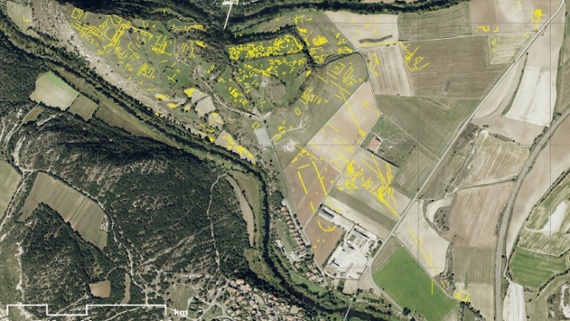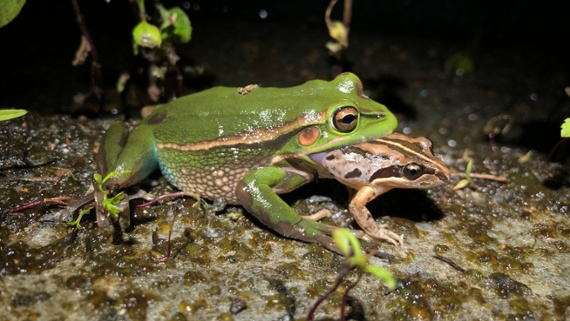July 24, 2024: Surprising news about Jupiter's Big Red Spot, a climate-friendly concrete and a new way to synthesize superheavy elements. —Andrea Gawrylewski, Chief Newsletter Editor |
|
|
Jupiter as seen by the Hubble Space Telescope on June 27, 2019 (left). An illustration by the French artist and astronomer Étienne Léopold Trouvelot of Jupiter as observed on November 1, 1880 (right).NASA/ESA/A. Simon/Goddard Space Flight Center/M. H. Wong/University of California, Berkeley (left); The Picture Art Collection/Alamy Stock Photo (right) |
|
|
Astronomers simulated the flow of Jupiter’s atmospheric gases around the Great Red Spot, then compared the results with a broad range of archival measurements of the planet’s GRS across the centuries (some dating back to the 1600s!). The researchers concluded that the spot has come and gone over the years, and the current GRS is only about 193 years old.
Why this is so cool: Researchers determined that a single superstorm or even four or five converging storms are likely not the source of the GRS–not even several storm systems could account for the size of the GRS: The spot “is so huge that you could drop the entire Earth into it and our planet would plunge through without touching the sides,” writes astronomer Phil Plait. The researchers propose that a south tropical disturbance, in which the northerly-southerly flow of gases bumps into another band of laterally moving gases, would be able to form a system as big as the GRS.
What the experts say: “The GRS’s well-documented shrinkage has been accelerating since the 2010s. It’s not clear when or even if Jupiter’s angry eye will disappear,” says Plait. “Future astronomers may see a spotless Jupiter.” |
|
|
Winds around Jupiter's Great Red Spot are simulated in a JunoCam view that has been animated using a model of the winds there. NASA, JPL-Caltech, SwRI, MSSS, Gerald Eichstadt and Justin Cowart |
|
|
Some good news: A California company named C-Crete Technologies says it has developed America’s first carbon-neutral and commercially available ready-mix concrete. Its manufacturers say it stands up to normal concrete–compression tests examined by E&E News show the compressive strength of C-Crete concrete to have a much higher compressive strength than conventional concrete.
How it works: The company says they use naturally occurring rocks, such as zeolite, whose processing doesn't produce carbon dioxide. The traditional ingredient for concrete, Portland cement, is formed by breaking down limestone into usable calcium oxide, a carbon-intensive process. The company also says they can make their concrete at room-temperature, eliminating the massive energy used during the heating of traditional concrete.
Why this matters: Concrete is not a climate-friendly material. Its production accounts for 8 percent of global carbon dioxide emissions (that’s more than all of India’s CO2 emissions). Every ton of concrete releases about one ton of carbon dioxide. In the next 30 years, the number of buildings in the world is expected to double. |
|
|
• The Biden Administration enacted legislation protecting workers from extreme heat. But a 50-year-old loophole will leave nearly 8 million workers without protection. | 6 min read |
|
|
• NASA has canceled the VIPER lunar rover mission, which promised a revolution in our understanding of the moon’s precious deposits of ice. | 8 min read |
|
|
NASA’s VIPER (Volatiles Investigating Polar Exploration Rover) sits assembled inside the clean room at the agency’s Johnson Space Center. NASA |
|
|
• Biden’s exit is a clear referendum on aging candidates, writes Jerel Ezell, an assistant professor of community health sciences at the University of California, Berkeley. But it’s an even more intimate and intuitive referendum on how humans age, and what neuroscience can tell us about cognition and age. "We do quite a bit of projecting on aging candidates because we begrudgingly see ourselves as one day being in their shoes," he says. | 6 min read |
|
|
• A meteor exploded over Manhattan last week. | The Guardian |
|
|
• Why don't the water wasters have to pay more for water? | Texas Monthly |
|
|
Jupiter seems to jolt human curiosity into high gear: The planet is 11 times wider than Earth, and the large anticyclonic vortex at its equatorial belt (the Great Red Spot), is larger than our entire world. It has no surface to hold a lander, but is a giant atmospheric-body of swirling ammonia, hydrosulfide and other molecules that extends thousands of miles down from what we can see. Why or how the gases interact to yield that reddish tint scientists don't fully understand. Oh, and there's lightning storms in the clouds. Jupiter is as far from home-like as most Earthlings might imagine. Check out these citizen-scientist images of the giant planet. |
—Andrea Gawrylewski, Chief Newsletter Editor |
Subscribe to this and all of our newsletters here. |
|
|
|
|
|
|
|

























